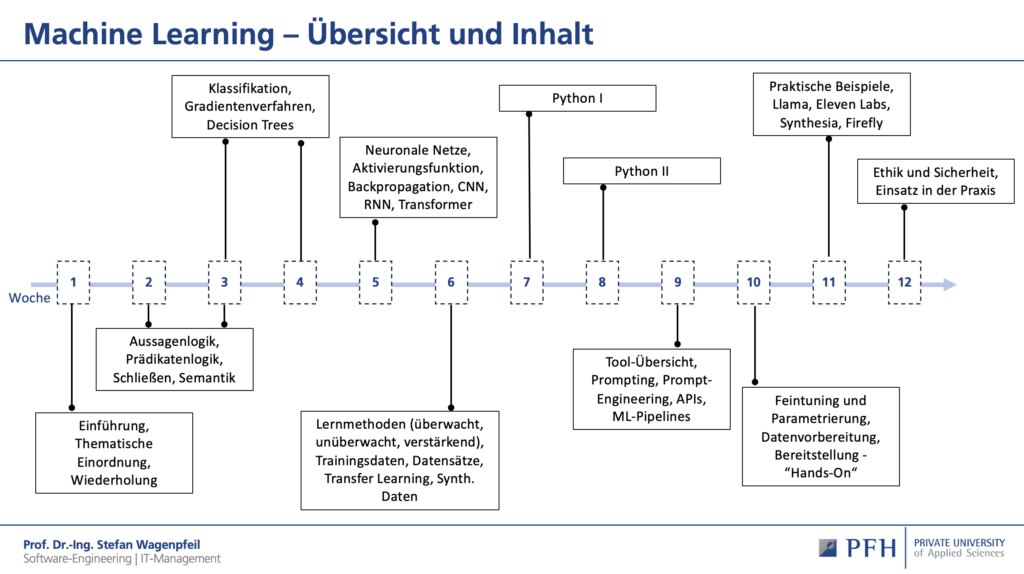Machine learning (ML) is a central area of artificial intelligence (AI) that enables computers to learn from data and improve themselves without explicit programming. ML uses algorithms to recognize patterns in large data sets and make predictions or decisions on this basis. There are various approaches in machine learning that represent different learning methods. Supervised learning is based on the use of training data that is already labeled with the desired outputs, while unsupervised learning works without predefined labels and aims to identify hidden structures in the data. Another method is reinforcement learning, where a model learns through interaction with an environment and adapts its decisions based on rewards or penalties.
In addition to the basics of propositional logic, predicate logic and semantics, this course also covers techniques such as decision trees, gradient descent, neural networks, transformers and generative AI. Python has established itself as the preferred programming language in the field of machine learning, as it offers a variety of libraries, such as TensorFlow, Keras and Scikit-Learn, which greatly simplify the development process of ML models. Python can be used to efficiently train, test and implement models. Therefore, a lot of work is also done with Python in this specialization module.

Generative artificial intelligence, such as the use of Generative Adversarial Networks (GANs), is another important field in machine learning. These models are able to generate new data that is very similar to the training data, for example images, texts or videos. Such approaches are used, for example, for creative applications such as the creation of realistic images or music. Overall, machine learning is revolutionizing a wide range of areas, from image processing to speech recognition and automation.




